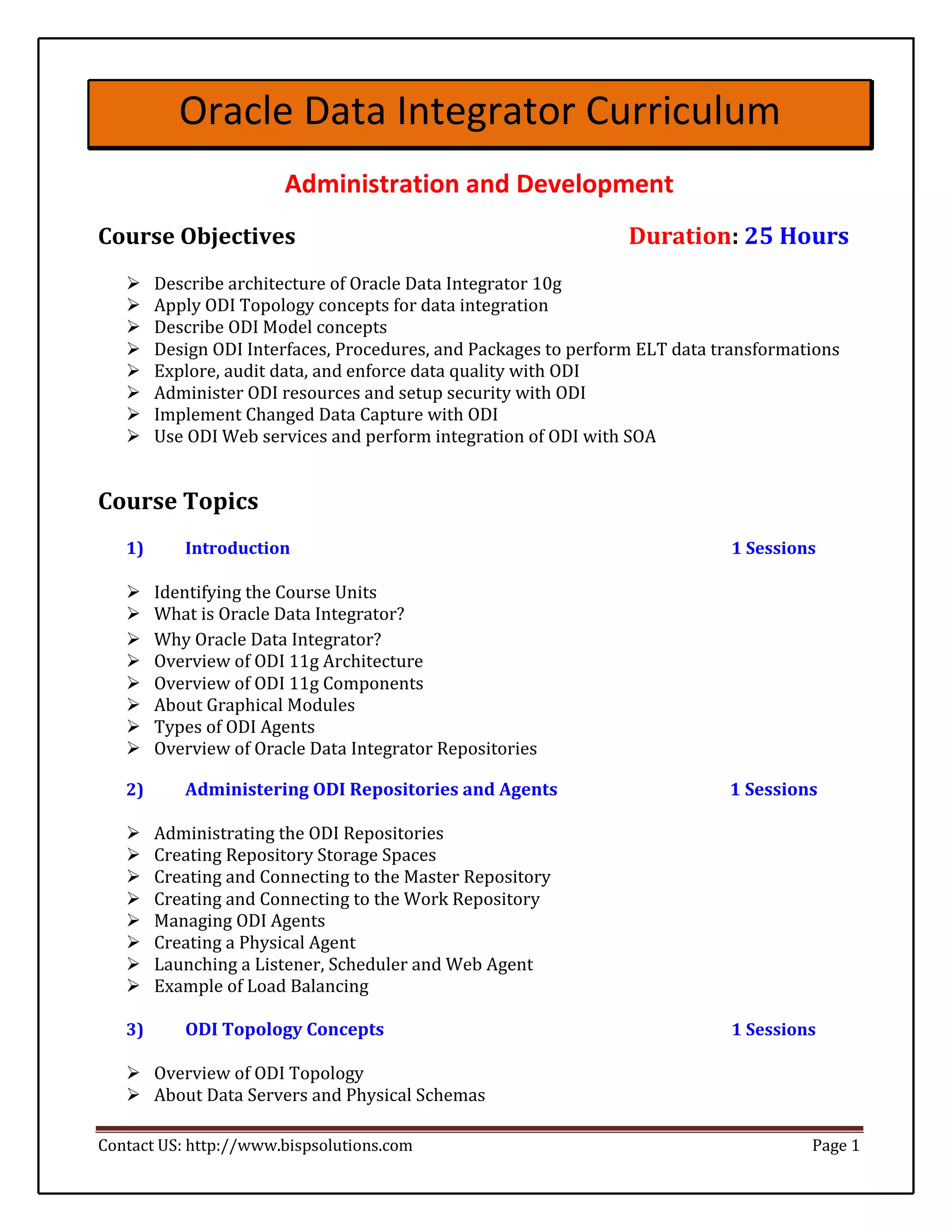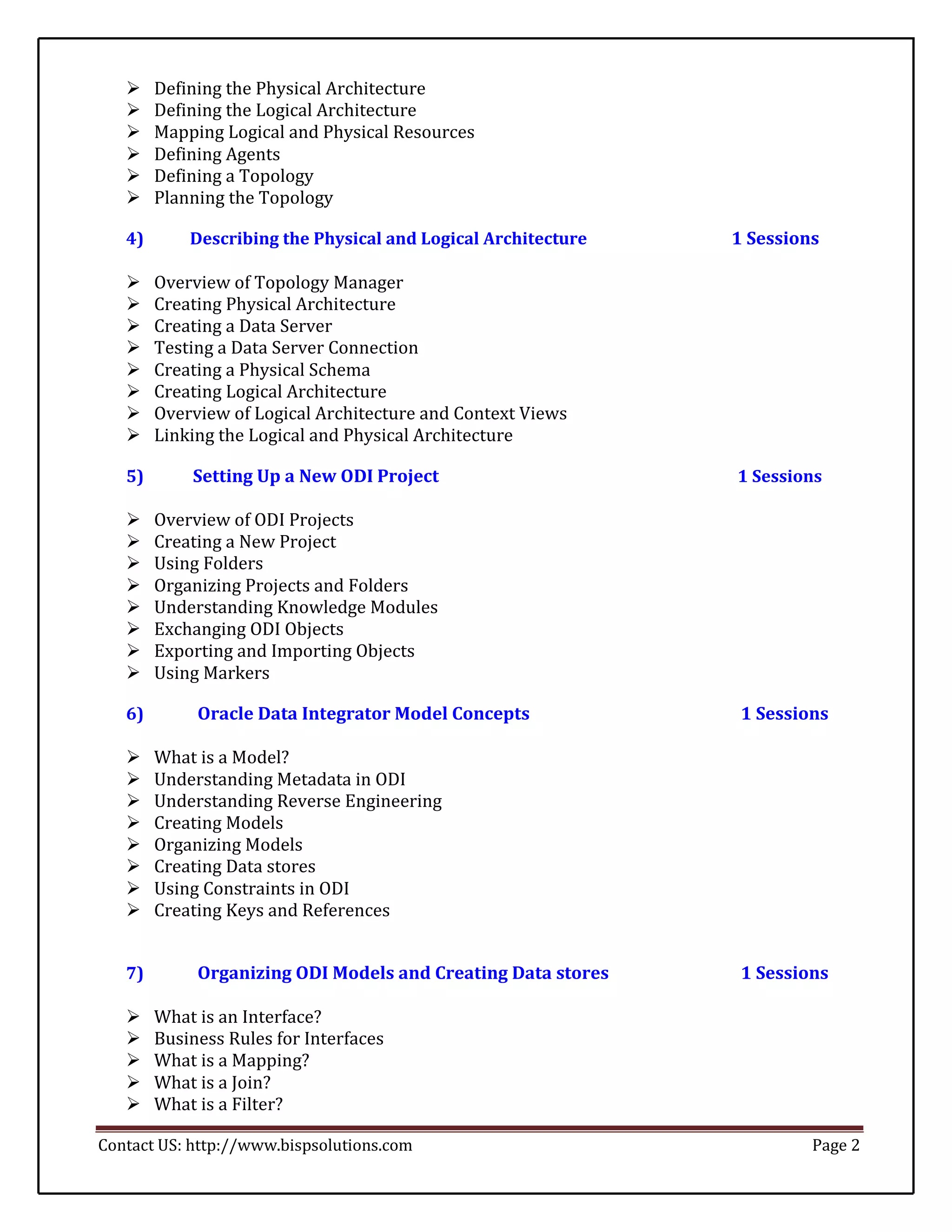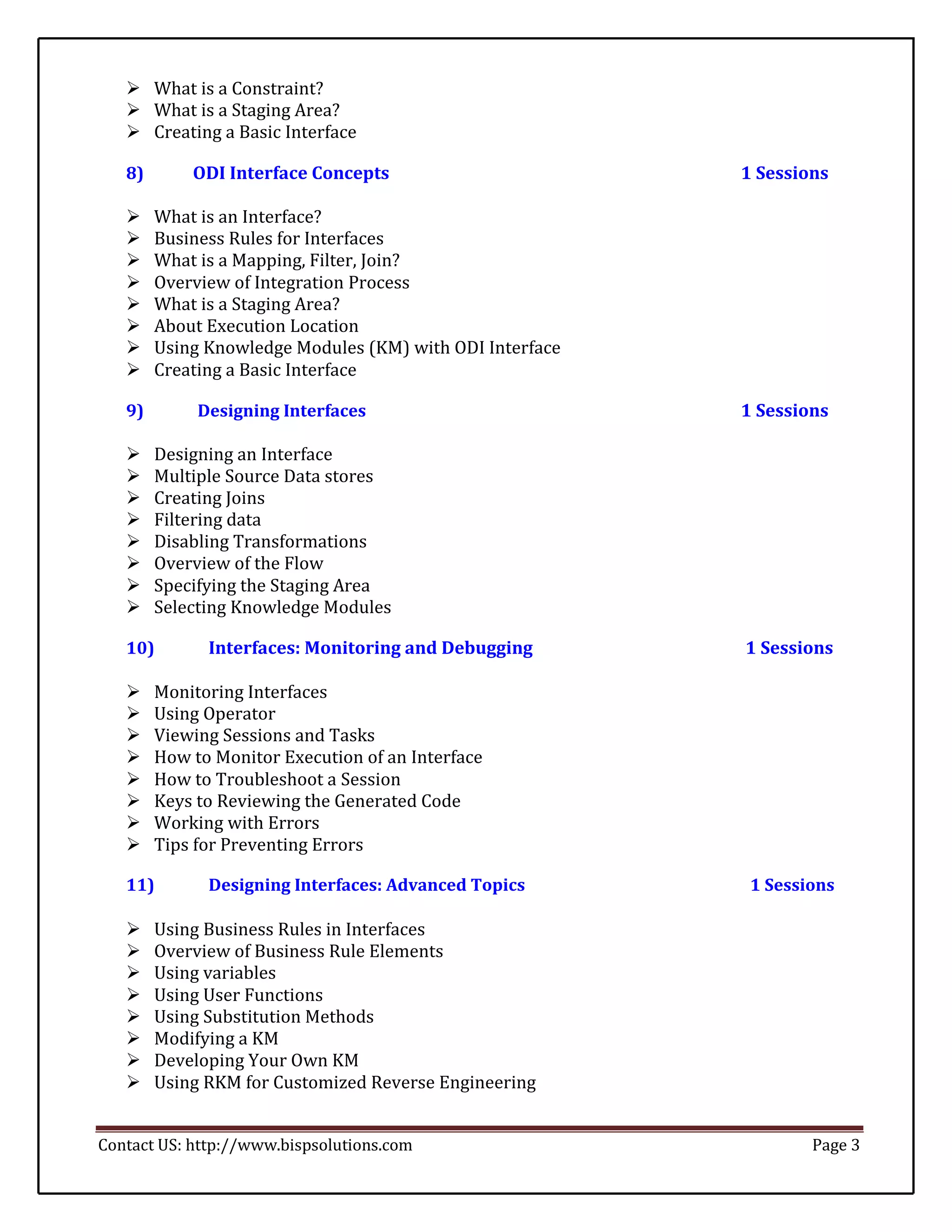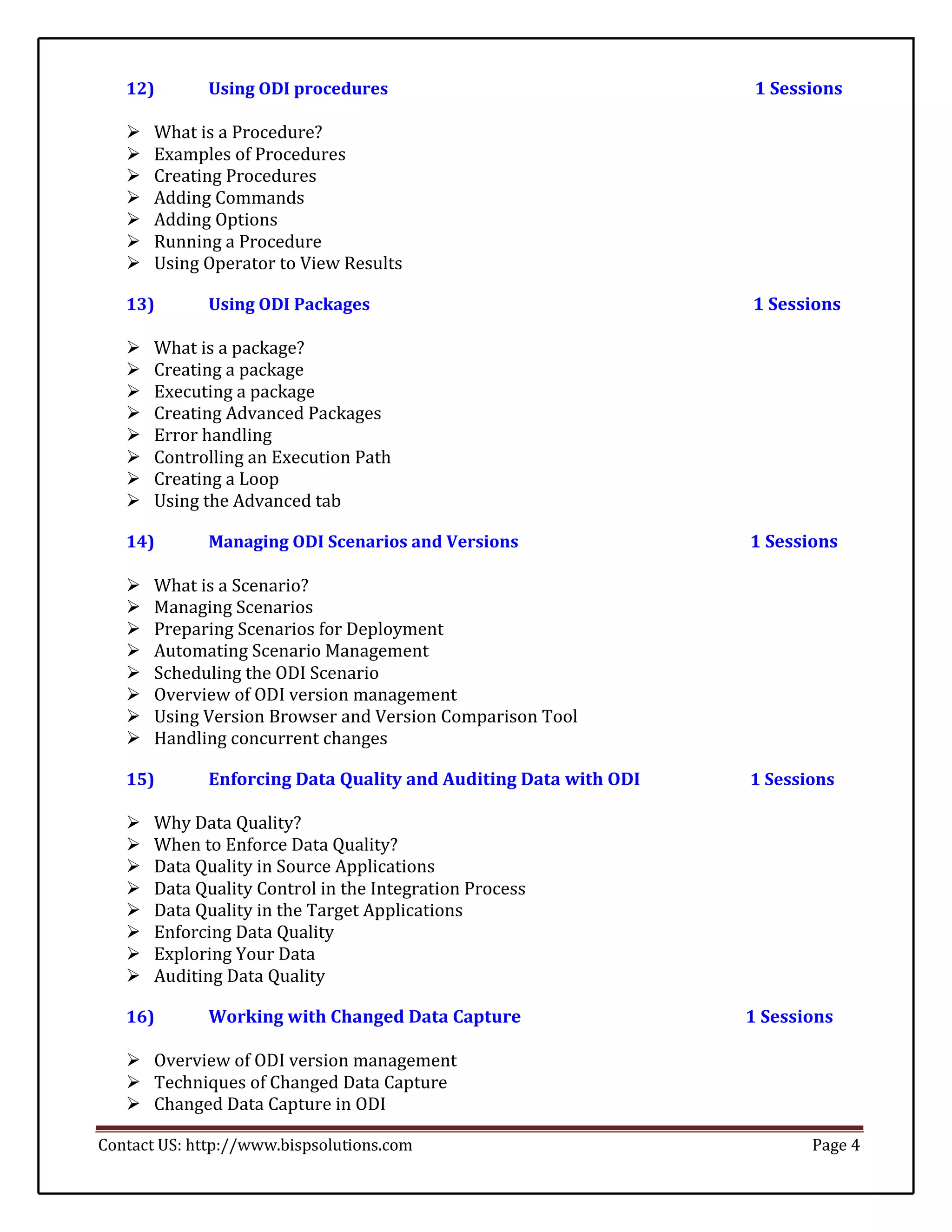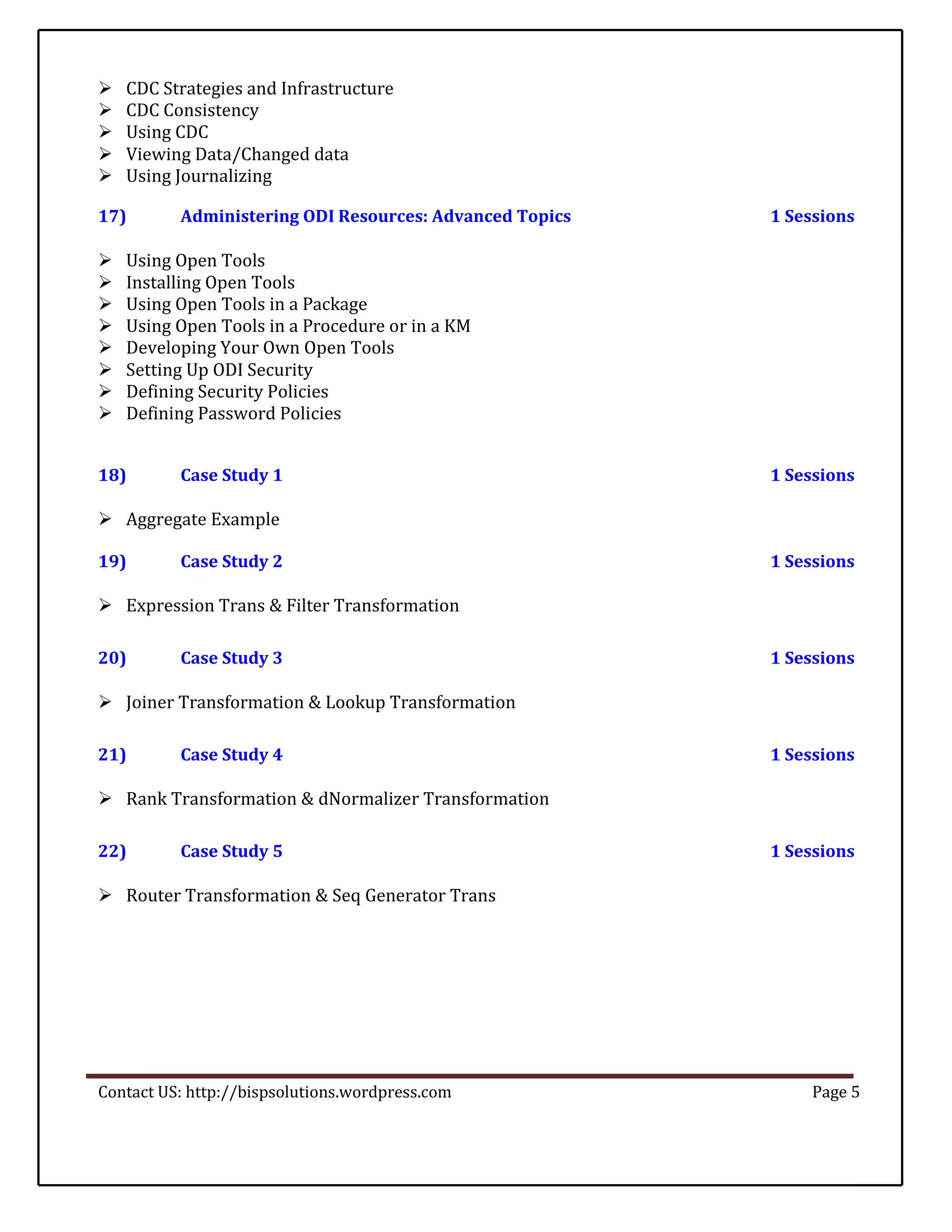The Oracle Data Integrator (ODI) curriculum includes a 25-hour course focused on various aspects of ODI, such as its architecture, topology, models, interfaces, and data quality enforcement techniques. Key objectives involve designing ODI projects, managing repositories, implementing ETL transformations, and understanding advanced topics like changed data capture and user-defined procedures. The course also features case studies to reinforce practical application of learned concepts.
